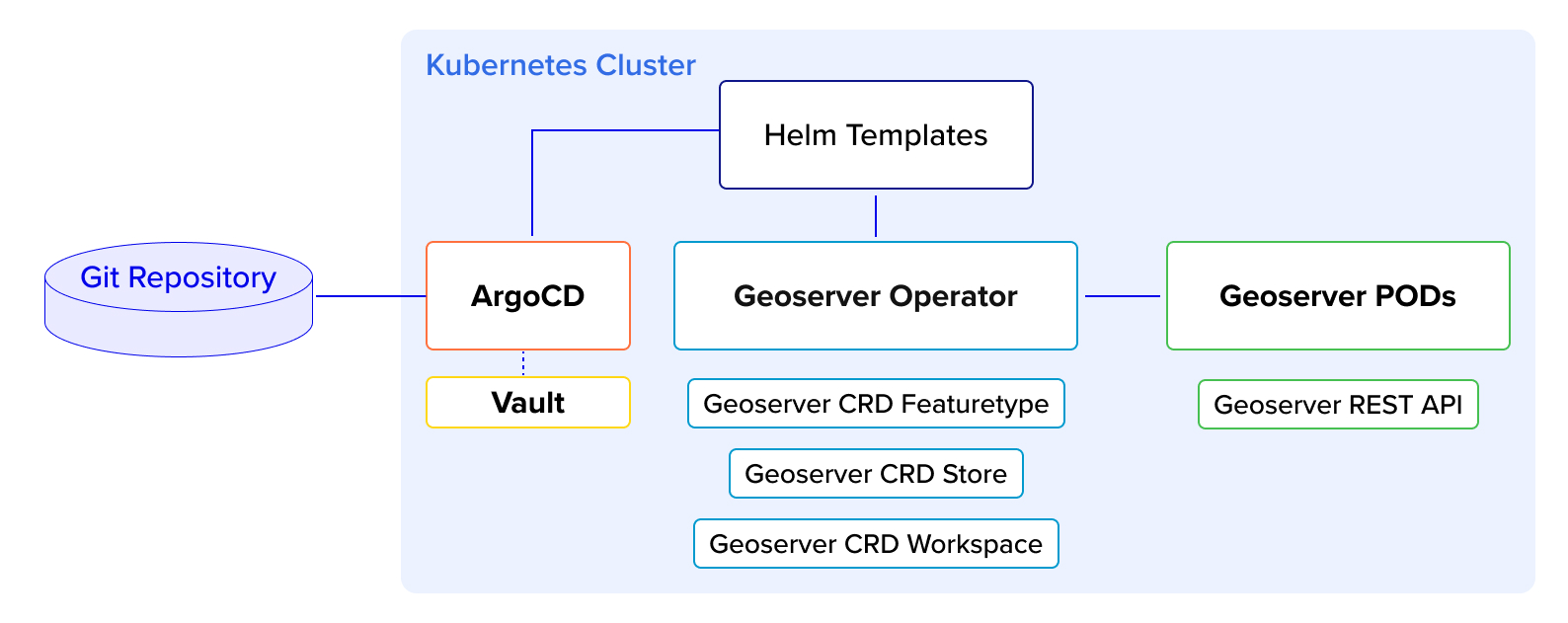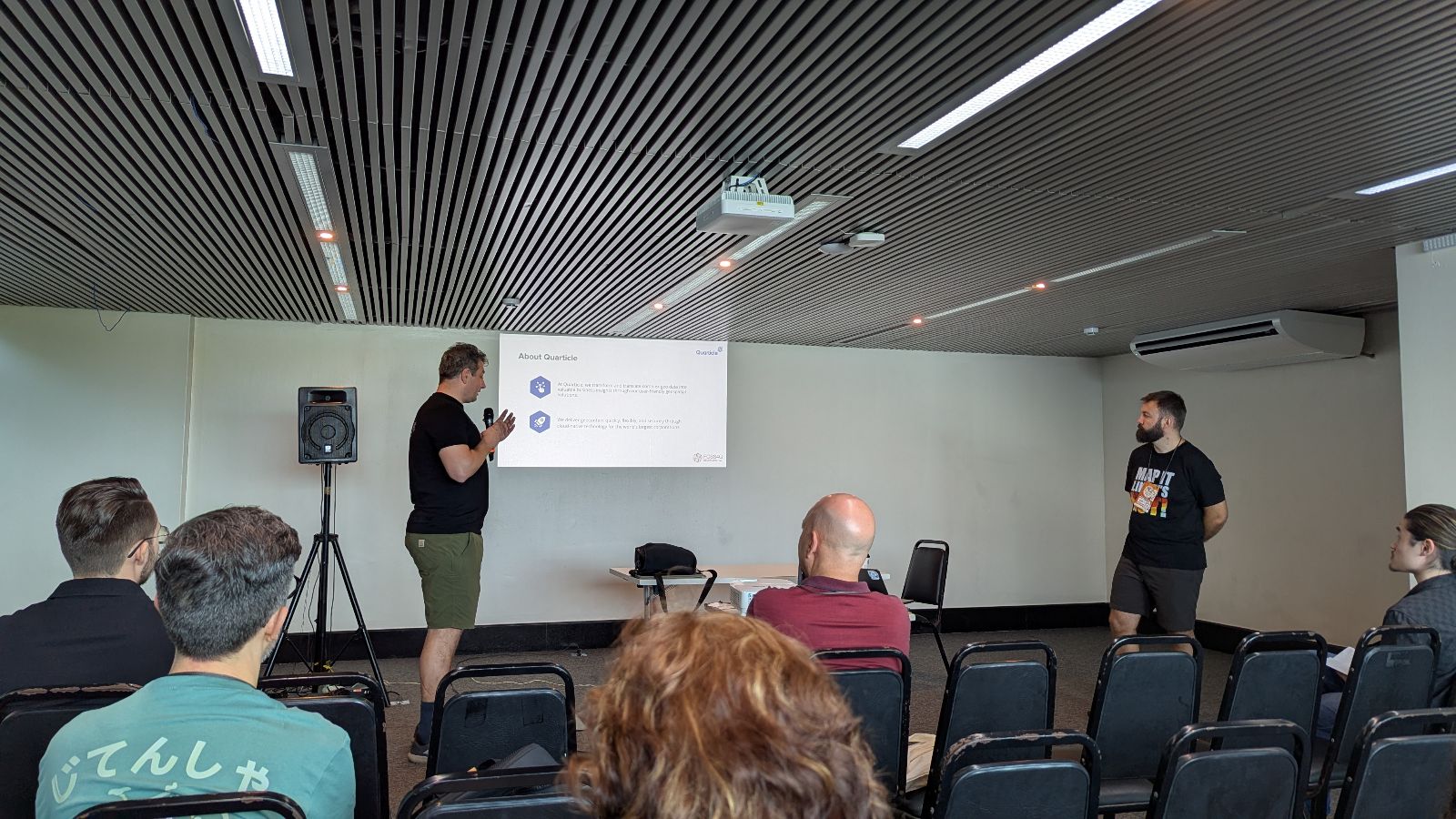Kubernetes Operator for GeoServer: Quarticle’s Approach to Automation
 0 min
0 minIn the ever-evolving landscape of geospatial technology, automation, and scalability have become critical for managing geo-servers efficiently. In this blog post, we dive into our innovative approach to managing GeoServer Cloud using a Kubernetes (K8s) operator, combined with Helm templates, ArgoCD, and Vault for seamless and reliable automation.
Why build a K8s operator for GeoServer?
Managing GeoServer instances can be time-consuming, particularly in large-scale deployments. Quarticle's K8s operator was designed to address these challenges by focusing on:
- Automation and efficiency: Automating GeoServer workflows for smoother integration into larger data pipelines.
- Reliability through declarative configurations: Ensuring consistent performance with Kubernetes Custom Resource Definitions (CRDs) and Helm templates.
- Scalability and modernization: Transforming legacy systems into self-healing, cloud-native applications while enabling independent scaling.
K8s Operator as a piece of data management pipeline
How it works: The actual workflow
The K8s operator simplifies complex operations through a streamlined workflow:
- Triggering updates: The user commits Custom Resource Definitions or updated values files to a Git repository.
- Deployment automation: Helm templates deploy the updated configurations.
- Operator action: The K8s operator reacts to create, update, or delete events and interacts with the GeoServer REST API.
- Reconciliation: The operator maintains the desired state by continuously aligning Kubernetes and GeoServer objects.
Architecture overview

To further enhance efficiency, Quarticle integrates ArgoCD into the workflow:
- GitOps-driven deployments: Changes in the Git repository automatically trigger updates in GeoServer.
- Real-time updates: Continuous deployment ensures the system always aligns with source control, minimizing downtime and manual intervention.
Key challenges addressed
Quarticle's implementation also tackles common hurdles in automating GeoServer, such as:
- Object lifecycle synchronization to maintain consistency across Kubernetes and GeoServer: Maintaining consistency between Kubernetes and GeoServer objects is critical for operational reliability, preventing data discrepancies that could disrupt workflows.
- Managing dependencies and integrating external resources: Advanced tools and methodologies simplify the inclusion of external resources, making workflows more modular and adaptable.
The combination of Kubernetes, Helm, ArgoCD, and Vault creates a robust framework for managing GeoServer resources with high reliability. As GeoServer Cloud development progresses, Quarticle remains committed to expanding support for additional objects and workflows, contributing to the broader GeoServer ecosystem.
P.S. Our colleagues showcased our approach to automating GeoServer with Kubernetes at FOSS4G Brazil 2024. Take a look at the presentation slides here.

